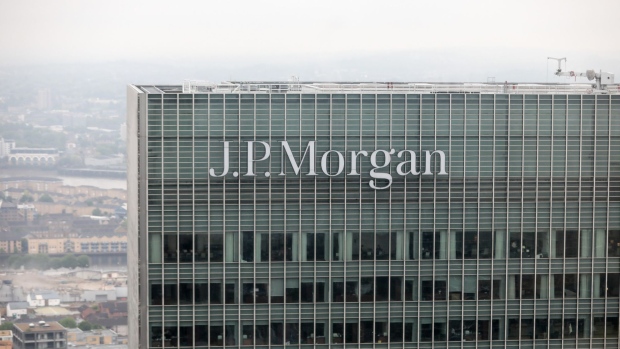Dec 5, 2022
JPMorgan Is Buying Top-Rated CLOs Again After Retreat This Year
, Bloomberg News

(Bloomberg) -- JPMorgan Chase & Co. has resumed buying top-rated collateralized loan obligation debt in the US after cutting back on purchases this year, according to people with knowledge of the matter, a sign that some of the market’s biggest investors may return to buying the securities again.
The bank is only buying sporadically, according to people, but when it does purchase it can take half or more of AAA graded CLOs in some transactions, said the people, who asked not to be identified because the transactions are private. It’s buying securities whose yields have shot up in recent months.
JPMorgan previously was one of the biggest buyers of AAA CLO securities. But many US banks have pulled back from owning the securities this year, making it harder to sell the top-rated portions, according to Lauren Law, a portfolio manager at Octagon Credit Investors, which puts CLOs together.
A spokesperson for JPMorgan declined to comment.
Stress tests by the Federal Reserve and rising rates have forced financial institutions to increase capital, and they had started trimming CLO purchases even before taking large losses on buyout financing. Banks are instead investing in asset classes that require less regulatory capital charges, Maggie Wang, global head of CLO strategy at Citigroup Inc., said in September.
Now the prices may be low enough for some banks to take notice and start tiptoeing back into the market. JPMorgan is buying for its treasury, and is receiving somewhere around 2.5 percentage points more interest than the benchmark rate on one of the transactions it bought, an unusually wide spread, the people said. One of the widest levels for that risk premium for a new deal this year was 2.65 percentage points for a deal from Brigade Capital Management.
Some European banks have been buying more portions of AAA CLOs on deals that they are underwriting, helping to keep the market there alive.
In the US, CLO sales volume has fallen substantially. Issuers have sold about $124.7 billion of the securities this year, down 30% from this time last year, according to data compiled by Bloomberg News.
(Updates with sales volume data in last paragraph)
©2022 Bloomberg L.P.






